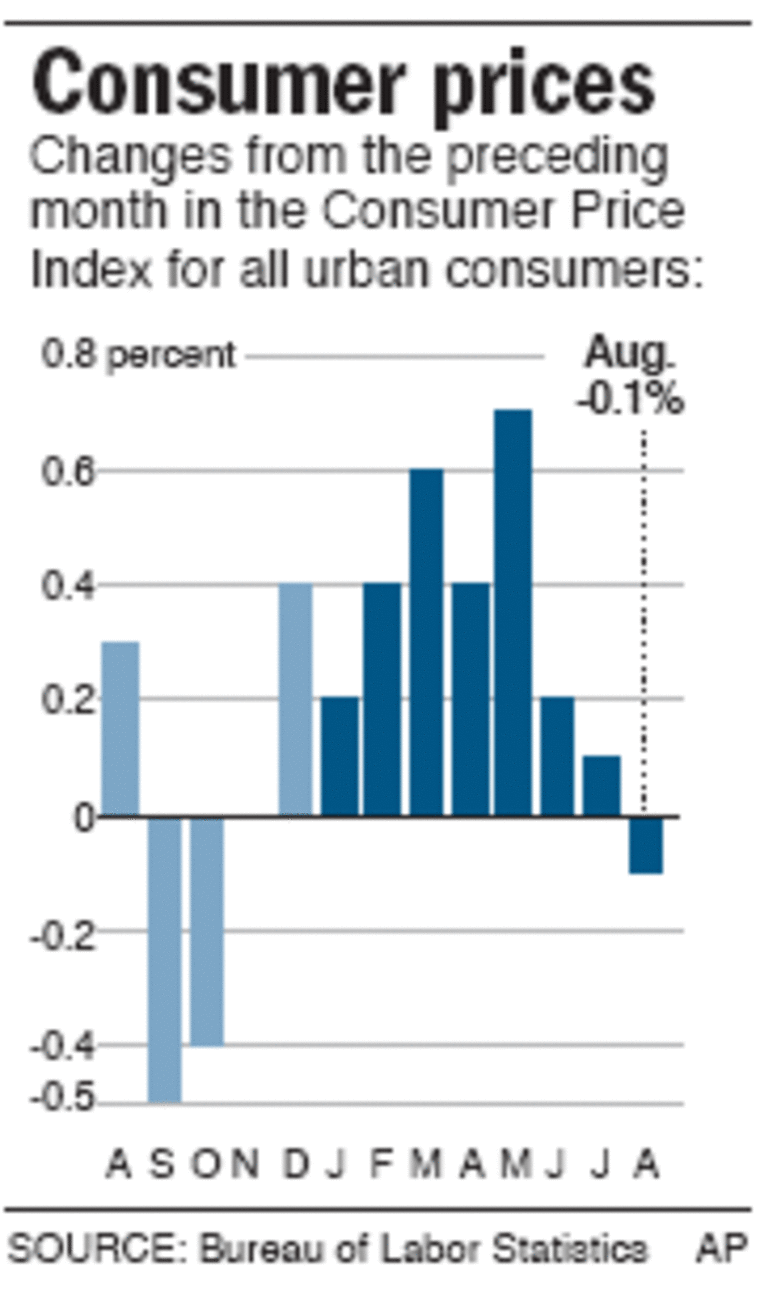Consumer prices in August fell for the first time in 10 months, as another big drop in energy costs offset higher food prices.
The Labor Department reported Wednesday that its closely watched Consumer Price Index dipped 0.1 percent last month, slightly better than the flat reading that had been expected. It was the first decline in consumer prices since a 0.4 percent fall in October 2006.
The new report came a day after the Federal Reserve cut a key interest rate by a half point, a bigger decrease than had been expected, in an effort to ensure that recent financial market turbulence didn’t push the country into a recession.
The Fed in its statement said that “some inflation risks remain,” but by making the bolder half-point cut in its federal funds rate, it was signaling that it clearly believed the threat of a recession outweighed concerns about inflation.
The Commerce Department reported Wednesday that construction of new homes fell by 2.6 percent in August to a seasonally adjusted annual rate of 1.331 million units, the slowest pace in 12 years.
Outside of food and energy, inflation remained well contained as well in August, rising by 0.2 percent. This core inflation rate had been up by just 0.2 percent or 0.1 percent for the past six months.
The 0.1 percent fall in overall prices reflected a hefty 3.2 percent drop in energy costs. It was the third straight decline in energy and the biggest drop since last October. The price of gasoline dropped by 4.9 percent while natural gas prices were down 4.2 percent.

Food costs, however, posted another big increase in August, rising by 0.4 percent, as higher costs for dairy products and fruit offset prices declines for vegetables and pork.
So far this year, food prices have been rising at an annual rate of 5.6 percent, far above a 2.1 percent increase for all of 2006.
The fall in consumer prices helped give workers more spending power. Average weekly wages, after adjusting for inflation, posted a 0.5 percent increase in August, the biggest increase since last October. In five months this year, inflation-adjusted weekly wages had fallen.
Overall inflation through August is rising at an annual rate of 3.7 percent, up from a 2.5 percent increase for all of 2006.
In addition to higher food costs, consumers have also been hit by surging energy prices, which are up 12.7 percent at an annual rate this year, even with the declines in the past three months. Analysts are worried that further price increases are in the pipeline given the fact that oil prices have now surged to record levels above $80 per barrel.
Core inflation, which the Fed closely monitors, is better behaved this year, rising at an annual rate of 2.3 percent through August, down from an increase of 2.6 percent for all of 2006.
The price of medical care continued to surge, rising by 0.5 percent in August. Medical costs are up 4.5 percent over the past year.
New car prices edged up a slight 0.1 percent in August, while airline ticket prices jumped by 0.6 percent. Clothing costs, which have been falling for much of this year, dropped 0.5 percent in August.